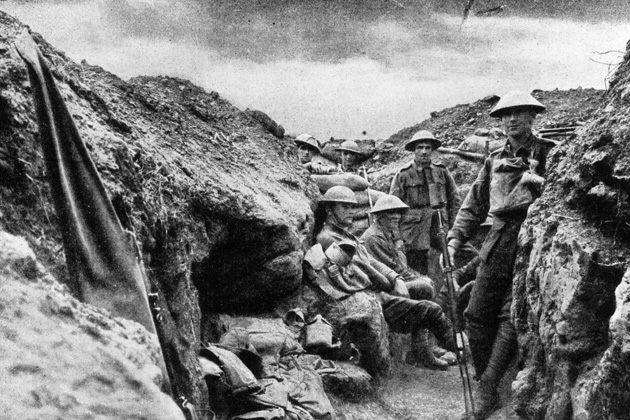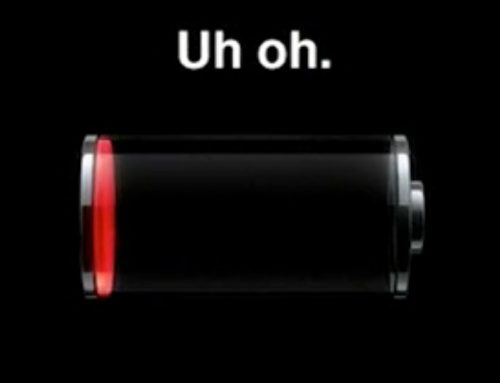Have you ever had to speak truth from the trenches of leadership?
It’s there, in the trenches, that the ability of a leader to be a truth teller is put to the test.
You see, while everyone likes to be a truth-teller when everything is looking rosy, the real test of a leader’s character is found when the challenges are at their highest.
In the trenches.
The trenches of leadership are found when the going is getting tough.
It’s when goals are not being met, when strategies are being questioned, when decisions are being second-guessed, and when teams are struggling.
If a leader can rise up and speak truth in the trenches of leadership they’ll see their leadership stock continue to rise. But it will mean proving the ability to speak truth in at least three leadership trenches:
1. When the truth makes you look weak
Can you stand up in front of your constituents and say, “We’re missing our numbers. We’re falling behind our plan. And I am responsible for this.”
When spoken out of genuine humility, this kind of truth-telling can project tremendous strength
2. When the truth makes you look fallible
The ability to say, “I don’t know how to do this; the truth is, I need your help” is one of the most profound forms of truth-telling possible. And it’s incredible how many leaders do not have the strength of character to be able to utter such words.
The best leaders know that, in the trenches, it’s necessary to openly acknowledge when it’s time for a little help.
3. When the truth makes you look wrong
Admitting mistakes is one of the hardest things for many leaders to do.
But in the trenches of leadership, saying “I was wrong” is one of the most important words a leader can utter.
Rather than making excuses or assigning blame effective leaders would rather be wrong and truthful, than to appear correct through deception.
The ability to be a truth-teller is core to the character of a strong leader.
But if you want to test your own truth-telling mettle, remember that test isn’t taken when all of the lines are going up and to the right.
You can only really take this test in the trenches.
What’s the most challenging time you’ve had to be a truth-teller?



That is a bizarre photo to include in this article. Why Hitler? It’s actually in my view a monstrously poor choice. Perhaps you should show your leadership skills and admit you made a monumental mistake by appearing to glorify the leadership skills of one of the most evil leaders in world history.
That’s actually a British Capt Richardson, according to the UK Telegraph, but it certainly brings him to mind. I’m guessing the author wanted to show a leader in the trenches? Bad choice of picture!
I also thought it was Hitler, agree that it was a terrible choice, and unfortunately won’t feel comfortable forwarding what is an otherwise good article to my peers.
The irony of using Hitler lies in the silence of the other nations to his atrocities. This is reflected in other nations’ leaders inability to speak the truth, stand up for the innocent, and stop the hate crimes. We face the same issues in our world today. By doing nothing, are we passively doing something?
For the sake of humility, Scott Cochrane brings to light excellent leadership points. Hitler obviously did not possess humility, nor do the terrorists of our time. I understand the author articulating to the readers the time is now for leaders to humble themselves for the sake of the whole.
Proverbs 3:34 He mocks proud mockers but shows favor to the humble and oppressed.
The ease with which the picture can be “misread” is indeed unfortunate. More so, however, is using a graphic which invokes a warfare metaphor for situations calling for strong leadership. We seem to easily slip into such metaphors when kinds of leadership we need may not be so situated at all.
I don’t agree that the picture, even though wrongly seeming to be Hitler, would glorify his leadership skills. First of all, one still needs to understand what success is and how that was accomplished. But setting that aside, if it was Hitler, my assumption of including it on this article would have been that he wasn’t able to do what was suggested, so would have re-inforced the points by showing someone who could not admit wrong, or appear weak or fallible – and ultimately failed as a leader.
Woa! Slow down!:)
To those who pointed out that the photo resembles one of the most evil people in history, you’re quite right; I missed the resemblance. (Was simply looking to capture the grit of being in the trenches)
I’ll swap out the picture.
Thanks for the head’s up!
Scott
These are excellent reasons and very important to improving trust. if admitting mistakes occurs frequently, however, then competence is called into question which impacts trust in a negative way. So, I absolutely agree with you adding a caveat.
Here is another good time to be honest. As a leader when you ask, “So what do you think?” what type of response to do want to hear? Agreement? Endorsement? How your idea could fail? Maybe a better way to approach that question as a leader is, “How could this idea fail?” I think the opportunity for forthcoming ideas would be offered more freely by other leaders and team members.
I am surprised at the reactions. I saw the photo and immediately knew it was a WWI photo. Hitler? Please….
Hitler? In a British uniform? Unless the picture’s changed since you wrote these posts…..I would NEVER have thought that. As to the article, a little light on content. I have done a similar thing, but it so much depends on who your team is, and more importantly who on your team wants your job. If only it were that easy.
When the CEO walks into the Corporate Compliance Officer’s office, demands an immediate major regulatory violation (100% personal liability) or be fired, the sides of the “trench” feel more like a vise around your brain. Eyeball to eyeball, you don’t have time to rationalize your behavior. Your inability to breathe is only overcome by your previously “entrenched” commitment to being an honest person. The value of your reputation has always exceeded your six figure salary. “No!”
Like the soldiers in the WWI trench, preparing for confrontation will not eliminate your problems, but will profoundly increase the probability you will survive them.
Christine- photo was exchanged. (Original was also a WWI scene, but some felt one soldier bore a resemblance to Hitler). Regarding “light on content”, this is a topic that warrants much deeper analysis; my purpose was merely to briefly draw attention to the issue. Hope to contribute more on the theme in the future.
Bill- the picture you paint is gripping. I felt my own chest tightening even as I read your words.
In other words, you nailed the leader’s paradox, vividly and profoundly. When the sides of the trench start to squeeze in there’s no time to rehearse leadership theory or, as you say, to rationalize behavior. This is when character comes out.
Truthfulness, or the lack of it, will come out when the pressure is on.
James, I really want to pick up on your comment regarding the suitability of a war-time image to illustrate this leadership principle.
With greatest respect, I would disagree with your conclusion.
The illustration is not so much of military per se, but more so of the realities of what it must have been like to be in the trenches. (And let me be quick to add, I’m grateful I never have had to experience anything like this in my own lifetime).
But what the trenches have in common with leadership is that it’s here that theory and academics are laid aside. Now all that matters is what you have on the inside.
I believe it’s an apt comparison. When it comes to gut-level truth-telling there’s no room to fake it when you’re in the trenches.
Really appreciate your contribution to the discussion.
What I took away is the need for leaders to be emotionally intelligent during these times of chaos. As to the trenches, even the best leaders were constrained by this is how we fight a war much like the British colonies did during the American revolution.
With honesty may come innovation from the least likely sources who believe they now have the opportunity to point out the emperor is naked without recrimination.
Leanne, your observations are an important addition to the conversation. “With honesty may come innovation from the least likely sources”- That’s a huge insight. Thanks for weighing in.
obviously British troops in WWI – helmets, British, Germans completely different headgear. Rifle to arms afficianado’s – obviously a British Lee Enfield. Hitler? a real stretch.
Some of comments reflect the general direction our society is headed in. I can’t believe the focus on the picture. The content of the article is what really matters.
Another example of “you can’t judge a book by its cover”. Great article, Scott.
I am absolutely mystified by some of the comments about this photo. I closely examined the photo and it doesn’t resemble Hitler at all! As part of this discussion let me relate to you two stories, one that actually involved me:
1) Several years ago, my wife purchased for me a certain necktie because it displayed a wonderful pattern of the head of a silent film icon whose work I respect immensely. One evening after having completed my manager’s report at a Village Board meeting the chairwoman of our cable committee exited the studio and slowly made her way to my desk. As she approached my desk she stuck out her hand and picked up my tie, and let out a sigh of relief. I asked her what was up? She told me that she believed the head on my tie was that of Adolph Hitler and was very relieved to see that it was Charlie Chaplin. I advised her: “You have just got to be kidding!” and resolved to have very limited contact with her from that point forward.
2) The New Jersey Palisades, a large glacier-created rocky cliff on the west side of the Hudson has provided a wonderful panorama for those of us who have lived in Westchester County on the New York side for nearly three centuries. During World War II, someone observed that a particular rock formation on the Palisades resembled a certain Third Reich dictator. Infuriated that this was the product of some Nazi conspiracy, this person initiated a near riot of public hysteria when all of sudden scores of people who had been staring at this rock formation for decades jumped on the bandwagon, drew the same conclusion, and demanded that it be destroyed. Fortunately, while the matter was debated, Mother Nature, as she does from time to time, took matters into her own hands, and a cascade of rocks unexpectedly wiped away the sadly maligned rock formation. End of controversy.
As others have said, obviously the picture was from World War I and the soldiers were British. Moreover, it should be known that the moustache sported by Hitler and Chaplin was worn by thousands of men in the early part of the 20th century who had nothing to do with fascism or the Nazis. Yes, Hitler’s use of this style of moustache has made it verboten for any modern man to sport. However, we find ourselves on a slippery slope when we make judgments about the way people dressed or the style of their facial hair nearly a century ago based on modern beliefs and sensibilities..
In conclusion, Scott Cochrane owes an apology to no one. If any thing, some of the people on this post need to apologize to Mr. Cochrane for jumping to conclusions. Frankly it’s back to the history books for some of you.
George F. Calvi
Ardsley Village Manager
So many great comments in this discussion, but I do need to actually defend some of the photo critics! Many of the comments are directed at an earlier picture I placed. While the earlier picture was also from WWI (and therefore taken LOOOOONG before Hitler was on the scene) I could see how someone might see a resemblance. I felt it best to avoid distraction and to change the picture.
So let’s all agree to close the picture discussion, and return to the core issue which is one of truth-telling “in the trenches” of leadership.
I’m particularly interested in the comment made by Leanne Hoagland-Smith, who notes “the need for leaders to be emotionally intelligent during these times of chaos”
Does anyone have an example of when you had to exhibit such emotional intelligence in a crucial leadership moment?
Love to hear some stories of real leadership “in the trenches”…
You people are idiots to even think it remotely looks like Hitler. To think so speaks volumes about your outlook on life and character.
The German uniforms of WWI don’t even closely resemble the ones in the picture.
The helmets are not even close to those of the German infantry soldier.
You are so uninformed it is ridiculous.
Michael Mancini – next time you want to say such inflammatory remarks, read the previous comments, particularly those of the author.